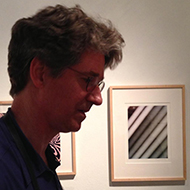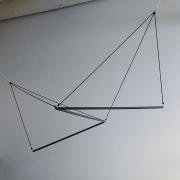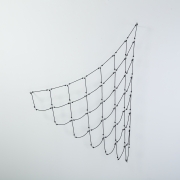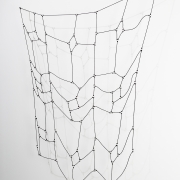Daniel G. Hill
AAA
Member: 1997–present
Secretary: 2019–2023
President: 2013–2018
Committees: Executive Committee, Communications Committee
Special Projects: Director, 75th Anniversary Print Portfolio
Biography
Daniel G. Hill was born in 1956 in Providence, R.I. He received an A.B., Magna Cum Laude, from Brown University and an M.F.A. from Hunter College, C.U.N.Y. He lives and works in New York City. He is an Assistant Professor of Fine Arts at the Parsons School of Design, was the President of American Abstract Artists 2013–2018, and currently serves as Secretary. Hill is a multi-disciplinary artist who has worked in sculpture, installation, painting, photography and digital media. He has exhibited in the U.S. for over 40 years and, since 2012, in Europe, Asia, Australia and Central America. His work is held in the collections of the Metropolitan Museum of Art; MoMA Library Special Collection; New York Public Library; Phillips Collection; Cleveland Museum of Art; Yale University Art Gallery; US Embassy, Beijing Embassy Annex, US Department of State; Arkansas Art Center; and in several corporate and private collections. He is the recipient of a fellowship in painting from the National Endowment for the Arts.
Statement
I am interested in the role of gravity in sculpture and how that differs from its more metaphorical role in painting. But what if gravity did have a physical affect on a painting? How would that manifest itself? What would that look like?
During the winter of 2014, I began by translating paintings into wire-frame drawings; quite literally drawing with wire. But I developed mechanical connections to make the drawing unstable. Instead of being fixed within a rigid and immobile plane, the drawing is flexible, dynamic, and three-dimensional. This led to more improvisational work investigating the relationship between gravity and structure. In 2016, I increased the scale of the work and sharpened the focus on issues of tension and compression through a change of material—polyester cord and PVC rod. I draw inspiration from the linear work of Gego, the planar work of Lygia Clark, and the string models of Antoni Gaudí.
In parallel, I’ve been exploring the relationship between painting and textiles. I had been interested in West African strip weaving and the use of pattern in Andean textiles. But it was a simple, black and white painting derived from Byzantine icons that got me to attempt to weave a pattern. I have done this with Shaker chair tape on wooden frames, thread stitched through paper or polyester film, and, more recently, with colored paper to make double-sided drawings.
These works use humble materials and economic processes, which are intrinsic to the resulting forms. But a common aspect of all of my work is the tendency to give rise to the questions, “What am I looking at, how do I relate to it and how do I understand it?” Such self-reflexive viewing is my goal, as an artist’s role is to remind us of our capacity to wonder.










